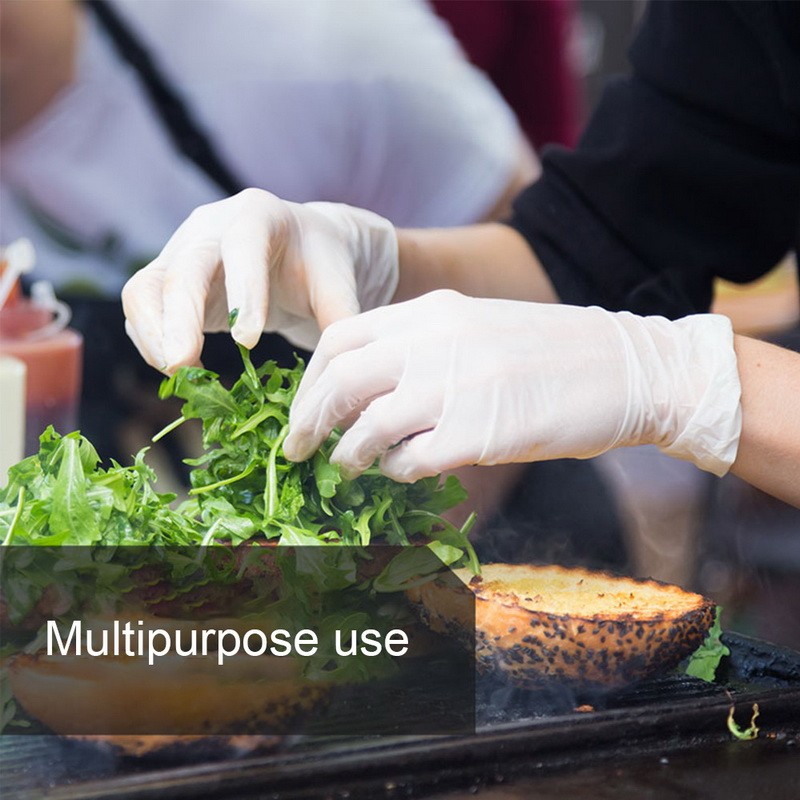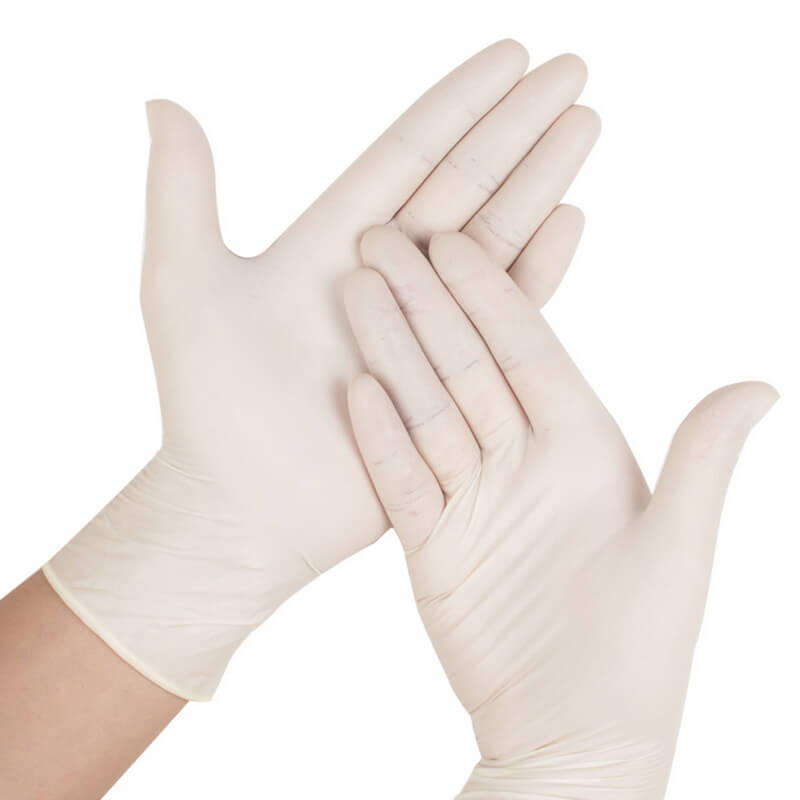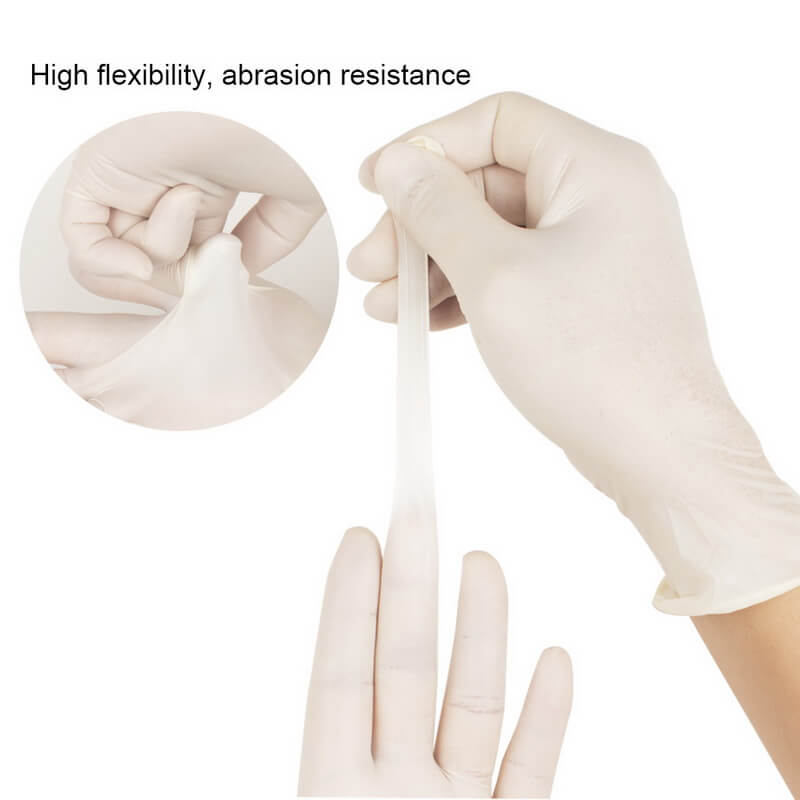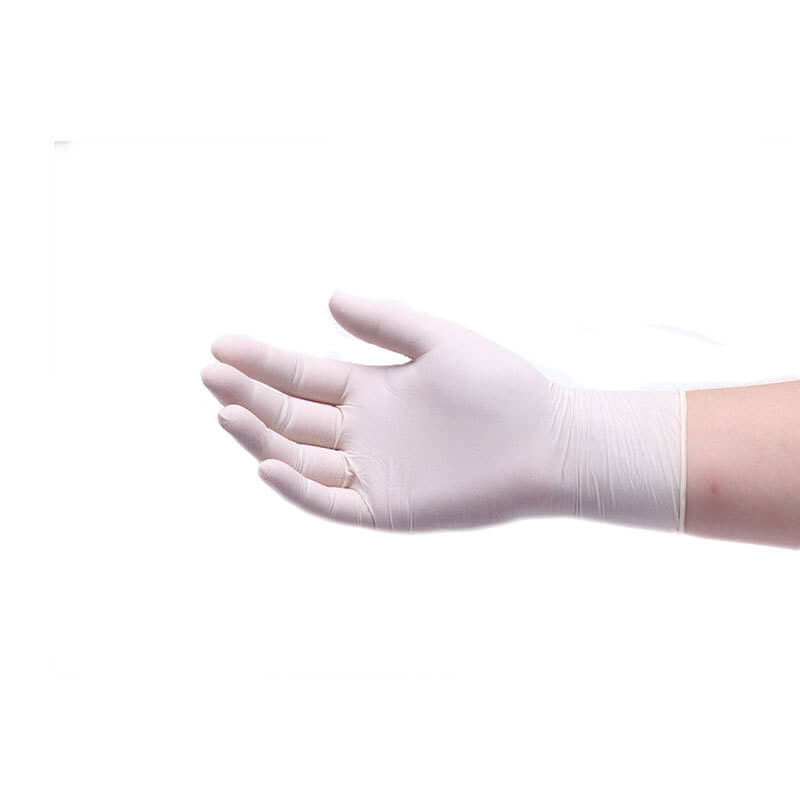The OH&S presents us with glaring statistics about hand accidents in the workplace. It is estimated that between 40% and 60% of all incidents in the workplace are hand-related. Many of the injuries caused are a result of not using disposable gloves or not finding the perfect fit.
There are different types of gloves for different tasks and it is important to know the appropriate gloves to use. We will look at the different types of disposable gloves, who needs them, and the situations in which they are used. (Learn More: https://en.wikipedia.org/wiki/Medical_glove)
What are disposable gloves?
In basic terms, disposable gloves are defined as protective garments worn over the hands to offer protection. These gloves protect the thumbs, fingers, wrists, and other parts of the hand from impact, chemicals, body fluids, etc. They are designed for single-use then disposal.
Disposable gloves can also be defined as PPE worn to shield the hands from hazards in the workplace. Such hazards could arise from chemical or biological liquids or impact that can lead to injury. For gloves to offer protection, they must be appropriate for the task and be made from the right materials.
Users of Disposable Gloves
There are different types of safety gloves used by different classes of workers. Major examples include cotton or fabric gloves, leather gloves, aluminized gloves, Kevlar gloves, etc. However, disposable gloves are different because they are designed to be used just once.
The question, therefore, is who needs disposable gloves? Here is a list of personnel that should make use of disposable gloves:
- Medical personnel. Doctors and nurses are required to wear a pair of disposable gloves before attending to patients. This is necessary to protect both the patient and the medical worker from infection.
- Emergency Medical Technician/Ambulance Technician. Most times, these are the first people to come in contact with accident victims. They must wear disposable gloves before attending to such victims to protect themselves from body fluids.
- Laboratory staff. Individuals who work in the laboratory come in contact with several chemicals daily. As a result of this, they are at risk of being injured from splashes or spills of chemicals.
- Manufacturing industries. The staff of manufacturing industries, especially those that manufacture chemicals and food, must wear disposable gloves. This is important to protect themselves and, in the case of food, avoid contaminating the food.
- Oil and gas workers. Employees who work in oil and gas are exposed to several acids, oils, and organic solvents. All of these pose risk to the worker which is why there is a need to protect their hands.
Situations to use disposable gloves
Disposable gloves, as seen above, can be used in a variety of industries for hand protection. It is important to note that these gloves are produced with specific service grading. As a result of this, the service grade determines the situation of the use of a disposable glove.
Mentioned below are some situations in which disposable gloves are used:
- Medical usage. Gloves are very important to the medical profession as they are worn to avoid cross-contamination. Along with this, gloves are necessary when dealing with sensitive materials like body fluids. Before putting them on the market, the gloves undergo several stages of testing to check for leaks, punctures, and visual defects.
- Food service usage. There are certain gloves designed specifically to be used in the food industry. They are worn by waiters, chefs, and other hospitality personnel. These gloves are necessary to avoid cross-contamination during preparation and service of the food.
- Industrial usage. Different industrial settings require the use of disposable gloves for different operations. They are known as industry-grade gloves and they are used in agriculture, beauty, aviation, marine, auto, industries. Industrial grade gloves are mostly black in color which helps to hide dirt and also project the wearer as a professional.
- Home use. Disposable gloves can also be used while cleaning or carrying out home chores. In this case, they can be designed in any color. Before wearing the gloves, check them for punctures, tears, fractures, and cracks.
Advantages and disadvantages of disposable gloves
Disposable gloves help to protect the hands against several workplace hazards. We have already looked at who needs gloves and the different situations where they are necessary. It is important to note that there are different types of gloves.
To consider the advantages and disadvantages of gloves, we must consider the different types. The different types of disposable gloves are based on the kind of materials used in making them. There are three distinct materials used in the manufacture of disposable gloves and they are:
- Latex
- Nitrile
- Vinyl
We will take a closer look at gloves made from each of these materials in light of their advantages and disadvantages.
Latex gloves: Advantages and Disadvantages
Latex gloves are made using natural rubber and they are mostly used against incidental contact. Some of the advantages include:
- They are highly tactile which is why they are seen as the best choice for sensitive applications. A vivid example of such sensitive applications is surgical procedures.
- Latex gloves are very durable, comfortable, and flexible. This is why they are mostly used in the medical field.
- Perfect for dealing with water-based and biological materials.
- Cheaper than the other types of disposable gloves.
Disadvantages of latex gloves include:
- They may result in skin reactions and trigger allergies.
- Latex gloves are not efficient with offering protection against chemicals. This is why it is not advisable to use them in procedures that require handling organic or chemical solvents.
- Finding punctures and lacerations on latex gloves is difficult which can put the wearer at risk.
Vinyl Gloves: Advantages and Disadvantages
These gloves are produced from either polyvinyl alcohol (PVA) or polyvinyl chloride (PVC). Let’s take a look at the advantages of vinyl gloves:
- They do not trigger allergies or cause skin reactions like latex gloves because of the absence of latex.
- Offer top-notch protection against chemical spills and splashes. For this reason, they are recommended for use in the laboratory.
- Just like latex gloves, they are comfortable and soft to wear.
- They are also flexible, strong, and possess tactile sensitivity due to the application of recent research discoveries.
The disadvantages of vinyl gloves include:
- Vinyl is not as durable as nitrile or latex which makes these gloves less desirable.
- Less sensitive to touch than other materials used in the manufacture of gloves.
- Vinyl gloves do not handle water-based solutions and organic solvents well.
Nitrile gloves: Advantages and Disadvantages
There are several reasons why nitrile gloves are preferred, especially for general purpose use. Let’s take a look at some of the advantages of nitrile gloves:
- More durable than both latex and vinyl gloves.
- Made of thin material so they are sensitive to touch.
- They are chemical resistant and offer more protection generally.
- Offer excellent fit, very comfortable, and also very soft.
- They are perfect for extended and incidental contact.
Despite having so many advantages, nitrile gloves have a couple of disadvantages. Two disadvantages stand out and they are:
- They do not possess as much tactile sensitivity as latex gloves.
- Nitrile gloves cost far more to produce than latex and vinyl gloves, hence, their pricey nature.
Design and Structure of Disposable Gloves
Disposable gloves, as we mentioned in the previous section, are made from three major materials. These include nitrile, latex, and vinyl but there are other materials as well such as neoprene. In this section, we will look at gloves in light of the material that constitutes their structure.
Firstly, here is a table that compares the three different materials in terms of design and unique benefits.
| Glove type | Definition | Advantage | Protection level |
| Latex gloves | Designed using natural rubber. | Best comfort, fit, tactile sensitivity, and flexibility. | Viruses, bacteria. |
| Vinyl gloves | Sometimes they are known as synthetic gloves because they are made using a synthetic material. | Synthetic option to latex gloves, comfortable, cost-efficient. | Chemicals. |
| Nitrile gloves | Designed using synthetic materials. | Durable and stretchy. | Viruses and chemicals. |
With a clear understanding of the three different materials, we must explore more specific options. Each option comes with unique benefits that accrue to their users based on their design and structure. The distinct options have been explained in the table below:
| Glove option | Explanation | Advantage |
| Powdered gloves | The gloves are usually powdered using corn starch. | The powder makes donning of the gloves easier. |
| Powder-free gloves | In these gloves, the powder coating is completely removed. | Cleaner for use and doesn’t trigger as many allergies as powdered gloves. |
| Chlorinated gloves | These gloves are free of powder but are usually treated using chlorine. | Free of particles which reduces the risk of allergies. Easy to don. |
| Non-chlorinated gloves | The gloves are powder-free but make up for this with silicone/gel coatings. | Odor-free, neutral color, and possess long shelf life. |
| Examination gloves | Sterile and non-sterile grade medical gloves. | Protect the wearer from exposure to bodily fluids and blood. |
| Surgical gloves | Mostly sterile but very high-quality gloves for medical procedures. | Ensures protection against bodily fluids and blood. |
| Chemo gloves | These gloves are used for handling chemotherapy drugs and other chemicals after a series of tests. | Protects from exposure to chemicals. |
| Gloves with Aloe | They are coated with organic aloe. | It helps to keep the hands moisturized during use. |
| Gloves with oatmeal | The gloves are covered using colloidal oatmeal. | Prevents dry skin and protects wearers who already have dry skin. |
Testing for quality
It is impossible to discuss the design and structure of gloves without mentioning the tests they pass through during manufacture. Different disposable gloves are used for different purposes which is why they must pass through rigorous testing. Whether in health care or industrial applications, workers are exposed to all manners of risks.
Minimum quality standards
The standard for glove inspection is the “Acceptable Quality Limits (AQL). This is based on the prescription of the American Society for Testing and Materials (ASTM). The AQL testing method is applied to batches of gloves and it functions in terms of percentages.
For example, let’s say 100 gloves are to be tested using an AQL of 3.0. The standard allows just 3 gloves to fail the test in that batch. The standard for medical gloves is 1.5 or even lower in some cases.
Glove testing methods
Several levels of inspection go into the quality testing processes in glove manufacture. An example of such tests is the pinhole leak test. This test checks the glove for barrier integrity and determines if the test is good enough for medical procedures.
The test requires filling the gloves with a liter of water and closing them at the cuff. Following this, the gloves are hung upside down. If there are no leaks, the gloves are certified for use medically.
Gloves used industrially do not need to go through this sort of testing. Nevertheless, because manufacturers produce them on the same line with medical gloves, they pass through the same tests.
How effective are disposable gloves?
You find disposable gloves almost everywhere today, from the hospital to your favorite restaurant. They are worn as personal protective equipment to protect the hands from different kinds of hazards. The beauty of these gloves is that even though they are soiled very quickly, they are not costly to replace.
One question begs to be answered, how effective are disposable gloves? We have put together a few points to show how effective these gloves are and why they are becoming indispensable.
- Protect against cross-contamination. In many workplaces like health care, emergency response, and food, cross-contamination is a huge risk. Bacteria and viruses can spread very quickly through this method.
During experiments in the lab, cross-contamination may alter results and render them inconclusive. With disposable gloves, such issues can be eliminated easily. You can change your hand protection easily and very quickly as you move from one patient or material to another.
The overall result of disposable gloves in this regard is that they ensure that you, your patient, and materials are protected.
- Prevent the spread of pathogens. Health care personnel, veterinary workers, and laboratory scientists come in contact with so many pathogens every day. Without adequate protection, they can quickly spread these pathogens to other people or surfaces that are used frequently.
With disposable gloves, these individuals can protect themselves from these pathogens. They will also protect their patients since they will be changing gloves after each patient.
The workers are even more protected when they don and doff the gloves using the prescribed procedures. Proper donning and doffing curbs the spread of pathogens and diseases by extension.
- Protection from unknown hazards. In every field, there are certain risks that workers are not aware of. Such unknown hazards may be more dangerous as their unknown effects may be far-reaching.
For example, a wildlife professional who makes contact with an animal carrying a toxic substance. The professional needs to wear disposable gloves because there is no saying what effects the unknown toxic substance may have. This is why it is important to wear disposable gloves when dealing with tasks that require compliance with PPE standards.
- They don’t wear out. Now, this might be a bit confusing but their name gives the full details. They are designed to be disposable so they are disposed of immediately after each use. This could be moving from a patient to another, or a whole shift at the factory.
The gloves will not wear out since you don’t wear them over and over. Like we stated earlier, gloves in each industry have grades that determine their thickness. Such grades mean that the glove is designed specifically for the task you are carrying out.
With this, you rest assured that the gloves will see the task through. Since they are cost-effective, you can have as many as possible to work with as well.
How to select disposable gloves
Just picking up a pair of disposable gloves and wearing them doesn’t guarantee your protection from workplace hazards. You must select the right pair of disposable gloves. You should note that gloves are sensitive to tasks and work environments.
The gloves should have undergone the required testing and must be approved. Asides satisfying the test requirements, there are a couple of factors that will help you make the right choice of gloves. We have listed the factors and explained them below.
Fabric or material
We have already told you the three different materials used in making disposable gloves. Along with this, we have shown you their pros and cons. From what we discussed above, nitrile gloves are seen as the most preferable because they are durable and don’t cause allergies.
Latex gloves are second in the ranking. While it is great that they are made from rubber, they may trigger allergies and unwanted reactions. If you are looking for the best fit, latex gloves are the best by a mile. Let’s not forget that they are tough, strong, and flexible.
If you are in search of a cost-effective pair, then you should choose vinyl. However, they are not as durable or as tough as the gloves mentioned above.
Service grade
The service grade of the gloves is a very important factor to consider before making a choice. You can decipher what industry the gloves will be used simply by checking the service grade. For example, gloves to be used in health care are graded by the manufacturer as medical gloves.
The same goes for gloves to be used in other fields. Ensure that you check to be sure that the gloves are designed for your kind of work before purchase.
Color
Each industry has a specific color of gloves identified with it. Health care, for example, favors white and blue gloves. This is because it is easier to identify punctures or cracks with these colors.
In industrial settings, it is very common to see black gloves. The reason for this is that black hides stains while adding a professional touch to the wearer.
Cost
You cannot discuss these factors without mentioning the cost of the gloves. How much are you willing and able to spend on the gloves? Check the market for different prices and then make your choice after striking a favorable bargain.
Proper way to use disposable gloves
There are best practices that govern the use of disposable gloves. Following this list ensures that you enjoy maximum protection while using the gloves. Here is a list of best practices to ensure you get the best from your disposable gloves:
- Always wash your hand before donning the gloves. This may seem counterintuitive but not washing your hands may lead to contaminating the gloves. It also means that if the gloves get torn during use, you are likely to spread germs. According to the CDC, you should wash the hands for a minimum of 20 seconds before donning the gloves.
- Check for tears, cracks, holes, or punctures before wearing. If you notice any of these, you should dispose of the gloves and get a new one.
- When the gloves start to look worn, replace them. The moment you notice degradation in the gloves, it is important to dispose of them. Get a new pair if you are not done with the task you are carrying out.
- Never wash and reuse disposable gloves. They are called disposable because you should dispose of them after use. You should only use them in the short term not use them multiple times.
- Always wear the right size of gloves. Your gloves should be the proper fit else your protection is compromised. This is because the gloves could get torn if they are too tight or fall off if they are too loose. Either way, you end up vulnerable to the hazards you sought protection against.
- Wash your hands when switching gloves. You must wash the hands using the CDC guidelines between gloves. This ensures that you don’t contaminate the new pair after taking off the old one.
- Watch out for allergies. If you are not sure if you are allergic to latex or not, stick to nitrile or vinyl gloves.
Conclusion
Disposable gloves are very important to keep your hands protected in several industries. Since they have become very popular, you must learn how to use them right. In this post, we have shown you the different materials used in making these gloves and their pros and cons. With the information above, we believe you should find choosing and using disposable gloves easier. (For more information, visit https://www.trendebut.com .)











